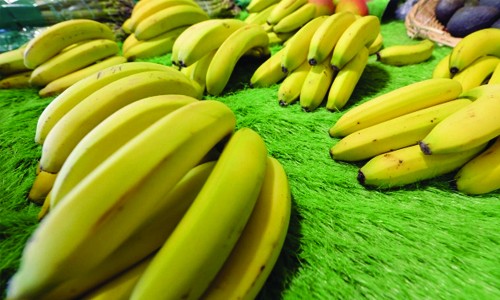Banana may be going extinct, new study says
A lethal fungus that has been threatening banana crops in Asia is now spreading to the rest of the world, and has some scientists warning of the popular fruit's extinction.
Researchers say that Tropical Race 4, a strain of the soil-borne fungus known as Panama disease is killing the Cavendish banana, the world's most popular variety, and has the potential to wipe out the $11-billion global banana industry, according to a study appearing in the online science journal PLOS Pathogens by researchers at Wageningen University in the Netherlands.
"We know that the origin of [Tropical Race 4] is in Indonesia and that it spread from there, most likely first into Taiwan and then into China and the rest of South-east Asia," Gert Kema, banana expert at Wageningen University and Research Centre, who co-authored the study, told Quartz. The fungus has now spread to Pakistan, Lebanon, Jordan, Oman, Mozambique, and Australia's northeast Queensland, Mr. Kema added.
Once it lands in Latin America, where more than three-fifths of the world's exported bananas are grown, it could lead to a bananapocalypse-size collapse of the yellow fruit, according to reports.
Researchers say that the disease affects the plants' vascular systems, preventing them from taking in water and causing the plants to rapidly wither and die. There is no known method for killing the fungus, so banana farmers simply try to contain it, a feat that has so far proved difficult.
Does this mean bananas as we known them are history?
History, in fact, offers grim precedent. In the 1800s, another strain of the Panama disease spread across another banana variety, the Gros Michel, the most popular banana at the time. In a matter of years, the Gros Michel was wiped out and declared commercially extinct.
The problem with the Cavendish banana, which eventually replaced the Gros Michel, is that it is a monoculture, or a clone that cannot evolve, which is believed to leave the fruit far more susceptible to disease.
Which is why it is under threat now and why banana expert Dan Koeppel suggested in a 2008 op-ed in The New York Times that consumers say goodbye to one of the world's most popular fruits.
"Perhaps it's time we recognize bananas for what they are: an exotic fruit that, some day soon, may slip beyond our reach," he wrote.
Not so fast say critics who argue that Koeppel's is a "chicken little" hypothesis that's been circulating for years to no effect.
In fact, an article in GM Watch, which advocates against genetic modification, says the banana extinction story is a recurrent tactic that's being used to promote genetic modification as the only alternative to banana extinction.
"'Only [genetic modification] can save the banana' is the underlying message of a story that first surfaced in 2001, made a comeback in 2003, and has done the rounds in the media ever since," writes GM Watch. In fact, in 2003, when reports were circulating about the banana's collapse, the UN's Food and Agriculture Organization (FAO) released a statement declaring that "Bananas [are] not on [the] verge of extinction."
It points out that "the Cavendish banana is important in world trade, but accounts for only 10 per cent of bananas produced and consumed globally."
And scientists suggest there are ways to stanch the lethal Tropical Race 4 virus and help bananas more resilient.
Growers can first eliminate infected crops and adopt effective quarantine measures that stop the virus from spreading. Once the virus is contained, the world should begin looking for alternatives to the Cavendish banana, experts say.
Because it's a monoculture and the only banana grown for widescale use commercially, the Cavendish banana's vulnerability is "inevitable and not unexpected", says the FAO.
The solution, then is simple: greater genetic diversity. As Koeppel, the banana expert, wrote in a 2011 article for The Scientist, "Most banana researchers agree that the real answer - as has been the case with crops like potatoes, apples, and grapes - is to abandon the monoculture that makes the emergence of a disease so devastating. A more diverse banana harvest would allow farmers to isolate susceptible bananas, surrounding them with more resistant varieties."
Related Posts

